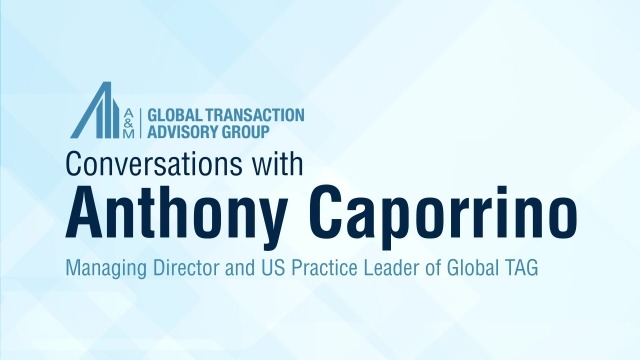UK M&A Mid-Year Update: Waiting for a Catalyst
A 65% year-on-year volume drop and 10% deal count[1] decline reveal the slowdown in the UK M&A market in the first half (1H) of 2023.
Valuation dislocations, higher debt financing costs and growing risk aversion amid an uncertain outlook are continuing to hamper dealmaking following last year’s slump. Many deals are dying on the vine, feeding into the sense of cautiousness among buyers and sellers who are avoiding starting new processes. Additionally, expectations that an increased level of distress among corporates in today’s environment of higher interest rates and inflation would lead to more M&A have not materialised.
According to Mergermarket data, there were 1,495 deals with an UK target in the 1H, 10% below the number of transactions in the 1H 2022 (1,664). This amounted to £96.8 billion in value, which compares to £283.3 billion in the same period of last year.
Large transactions remained few and far between in 1H. These complex and higher-stake deals demand alignment between several different parties and a level of conviction from buyers that is currently lacking in the market, especially on the private equity (PE) side. This is leading to a large gap in price expectations and several failed processes.
Despite the tougher conditions, interest in public companies has been relatively strong in the first six months of 2023. There were 23 public-to-private (P2P) deals completed in the 1H of 2023, compared with 11 in the same period of last year, according to Pitchbook data. However, ticket sizes have been smaller, again underscoring the difficulties to finance large-cap deals. For example, one of the largest transactions was Providence Equity Partners’ acquisition of UK events company Hyve in March for £320 million. This contrasts with the largest deal of the first quarter of 2022, a £1.3 billion buyout of pharmaceutical business Clinigen by Triton.[2]
PE: Focus on buy-and-build, minority investments and continuation funds
Amid tougher leveraged buyout conditions, the mid-market accounted for a big part of the activity in the 1H – this is clearly demonstrated by the smaller decline in M&A volumes (10%) relative to value (65%).
Bolt-on deals are being done at the same scale and speed as before, reflecting PE firms’ need to deploy capital and deliver on the buy-and-build strategies of existing investments. Given the uncertain backdrop, it also makes more sense for sponsors to add to an existing platform in a sector they are familiar with rather than invest in new ones. Greater debt availability, largely through credit funds with deep pockets of capital, as well as pre-existing acquisition financing in place, are also supporting these bolt-on acquisitions.
Anecdotally, we have also seen more minority investments, in which PE funds co-invest alongside other investors or acquire a minority stake while other shareholders maintain control of the business. The minority commitment allows risk-averse sponsors to write a lower equity cheque and increase their investment only after they get more confidence in the business. From a seller’s perspective, it offers an opportunity to take some money out while waiting for a potential increased valuation in the future.
Continuation funds have also emerged as a tactic for PEs to deal with the difficult environment for exits. This strategy is primarily viewed as a means to provide liquidity to Limited Partners (LPs) and to generate carried interest for managers. By selling a company to a different fund that they control, PEs have a chance to assign a price to the asset that’s closer to its fair value, rather than risk being marked at a discount in the external market or having to recover from a failed sale process.
Market waiting for a catalyst that could release pent-up demand wave
Looking ahead to the rest of the year, it is still unclear whether an uptick in deal flow will truly materialise in the coming months. The market seems to be waiting for a catalyst that could get restart activity, the key question being what this catalyst is. There are indeed some signs of improvement in the macroeconomic front. With inflation starting to stabilise in some countries, this could suggest the end of the rate hiking cycle is in sight. It remains to be seen whether this will be sufficient to release the pent-up demand for M&A that has been building over the past nine to 12 months.
A&M. Leadership. Action. Results.
A&M’s Global Transaction Advisory Group provides investors and lenders the answers needed to get the deal done. We combine our firm’s deep operational, industry and functional resources with Big Four-quality financial accounting and tax expertise to assess key deal drivers and focus on the root cause of any critical deal issues. As the largest transaction advisory practice outside the Big Four, our global integrated teams help private equity, sovereign wealth funds, family offices and hedge funds as well as corporate acquirers unlock value across the investment lifecycle. The firm’s Global Transaction Advisory Group includes over 900+ in 36 offices throughout the U.S., Latin America, Europe, Middle East, India, and Asia. Our global team has extensive industry knowledge across multiple sectors including, but not limited to, dedicated industry verticals in healthcare, software & technology, energy and financial services.
[1] According to Mergermarket data compiled by A&M’s Insight Center.
[2] https://pitchbook.com/news/articles/PE-UK-Europe-take-private-Q1-2023


